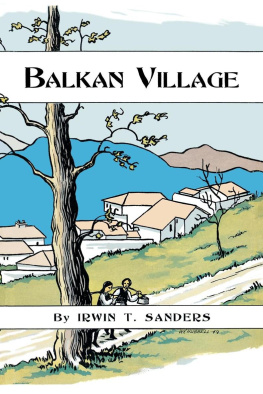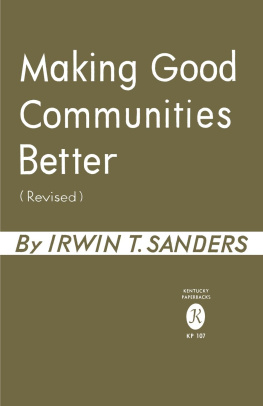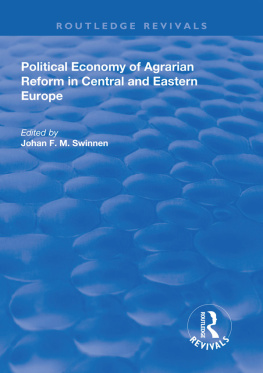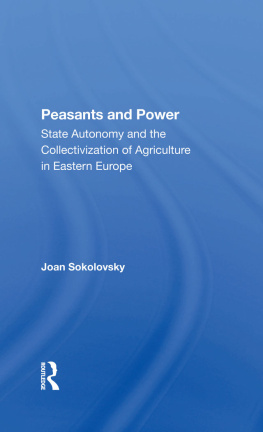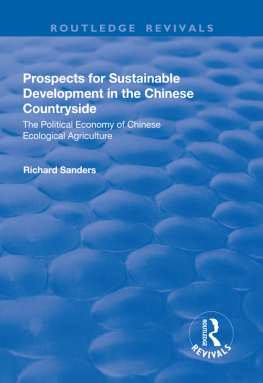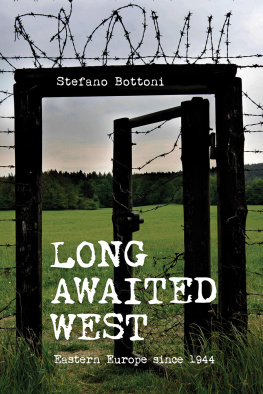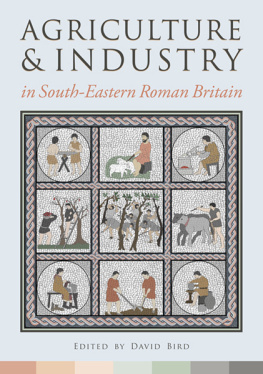FOREWORD
SPRING EACH YEAR brings to the campus of the University of Kentucky numerous delegates to scores of conferences. The spring of 1955 was no exception; yet it claims a unique quality, for on April 14-16 the University was host to the Conference on Collectivization in Eastern Europe.
This Conference, which was directed by Professor Irwin T. Sanders of the Universitys Department of Sociology, brought together specialists in Eastern European agriculturesome of them former government officials in the pre-Communist daysand rural social scientists who had no particular acquaintance with the area. Five well-known authorities delivered background papers to serve as points of departure for discussion. The real work of the conference took place in the seminars, where the Eastern European experts were confronted by American scholars and the thinking of each group was thereby stimulated.
Out of the Conference came a number of essays and reports. These, edited by Professor Sanders, and two additional general chapters have been brought together in this book. That the conclusions reached two years ago have been supported by subsequent events, especially in Hungary and Poland, is evidence that the work of the Conference was performed on a sound basis.
Of the many persons who worked to make this Conference and this book a successamong them many of my colleagues in the UniversityI wish especially to thank Philip E. Mosely of Columbia University, whose essay set the tone of the Conference; Edmund O. Stillman of the Free Europe Committee, Ernest Koenig of the United States Department of Agriculture, Nicolas Spulber of Indiana University, and Jozo Tomasevich of San Francisco State College, who presented the background papers for the four seminars. A complete list of those having a part may be found in .
I wish also to acknowledge a grant from the Ford Foundation, which made the Conference possible, and a grant from the University of Kentucky Research Fund, which aided in the publication of this book.
Martin M. White, Dean
College of Arts and Sciences
University of Kentucky
June 1, 1957
INTRODUCTION
THE DRAMATIC STORY of the struggle between the Eastern European peasants and Communist governments is best revealed in the fate of official efforts at collectivizing the family holdings into kolkhozi, or collective farms. The box score to date shows that the peasant has more than held his own in some of the countries, with the situation seemingly running against him in other countries. Yugoslavia and Poland have - for the time being at least - given up the idea of collectivizing the peasant; Hungary is trying to restore what collectivization it can from the aftermath of the October, 1956, revolution. In Czechoslovakia, Bulgaria, Romania, and Albania the governments still are officially pressing ahead with attempts to socialize the countryside through the device of the collective farm ruthlessly pushed by Stalin in the late twenties throughout the Soviet Union and imitated since the Second World War by the satellite governments.
The crux of the problem now faced by the Communist regimes is fairly simple. The peasant, who for centuries has longed for land of his own or else has been attached to actual holdings passed down from his forefathers, has little relish for the regimented way of life represented in the collective farm. As a result, he works under protest and with little enthusiasm. Production is low, and the regimes are forced to import foodstuffs into agricultural countries which exported these same commodities before the Second World War. Eventually, the officials of some countries realize that they can no longer afford the luxury of imitating a Soviet form of organization (the collective farm) at the expense of lowered production. Thus, to raise production they permit decollectivization and allow the peasants to take over the land that was formerly theirs. The chances are strong that even those countries which are stressing collectivization today may reverse their course in time, when economic realities push aside political considerations.
This volume, therefore, is dealing with one of the basic issues in the Communist world and one which affects the majority of people there, who are rural. The official Party doctrine, as interpreted by Lenin, would call for the creation of a rural proletariat who, as the toiling peasantry, would unite with the urban workers to create the Communist Utopia. Eventually, agriculture would be socialized and conducted as scientifically and impersonally as an industrial plant, with every farm worker being a technician rather than a farmer in the customary sense of the word. Of tremendous importance to the western world as well as to the Communists themselves is the growing realization by the Communists that this tenet of theirs is unworkable and that their vision of a Utopia will have either to be altered in substance or long delayed.
But the peasant in Eastern Europe has done much more than show that some of the official doctrine is in error; he has also shown that a totalitarian state cannot force all people to work productively in ways that are alien to them or where they lack sufficient individual motivation. Where force proves inadequate for a situation, a totalitarian system must find other substitutes which make it draw nearer to many of the characteristics of nontotalitarian societies (reliance on education, consideration of individual wishes, etc.). But as it loosens the reins of power, it makes itself vulnerable to powerful resistance forces which have been held in check. Hungary teaches that.
During the October, 1956, revolution while the Hungarian students were defying Soviet tanks and Hungarian factory workers were manning the barricades, a revolution was also occurring in the countryside. According to the Communist Kadar regime, about 2, 500 of the 3, 950 collective farms1 existing prior to October, 1956, were dissolved in October and November of that year. This is a large number when one considers the difficulties encountered by any peasant leaders who would seek to restore to individual members of the collective farm not only their land but implements, animals, and farm supplies. These 2, 500 farms that broke up illustrate the principle that collectivization is forced, and unpopular, and that when government control is relaxed, those living under duress seek to free themselves of this control.2
But collectivization needs to be viewed in its proper perspective. It has both a political and an economic aspect. The collective farm as introduced and pushed by the Communists in Eastern Europe is an instrument of political policy, as later chapters will show. It is therefore opposed by any persons, rural or otherwise, who do not want Communist control to be consolidated. However, students of peasant agriculture have for many years pointed out the numerous inefficiencies of the small peasant holding (5-10 acres) as a producing unit and have sought ways of helping peasants on a voluntary basis unite their land and their labor cooperatively so that all might benefit from the more rational use of land and draft power. Many governments have introduced programs of commassation, or of helping peasants get all of their scattered parcels of land into one unified holding, thus cutting down on the time spent in traveling from one distant field to the next. These efforts have been in the main spectacularly unsuccessful for a variety of reasons, but do represent modern mans rationed approach to more scientific agriculture. But the peasant is not a modern man, and the methods used to bring his way of life into the mainstream of the twentieth century are shown in the agrarian policies of each country with a large rural population. Collectivization, as one of the Communist answers, needs to be studied in detail, which is the central purpose of this volume.




